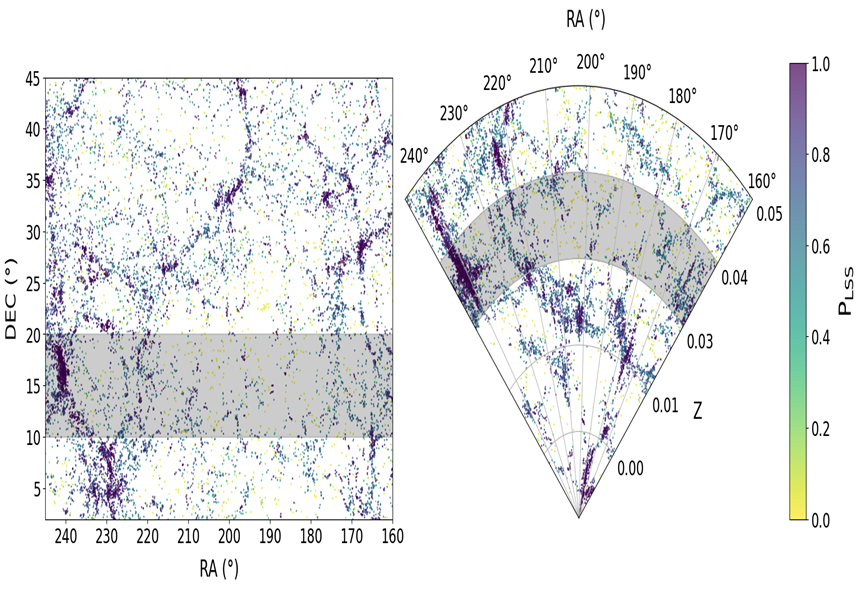
Título: Unidimensional parametrisation of galaxy locations in the large scale structure of the Universe
Lugar: Seminario del DAA. Edificio Investigación Jeroni Muñoz, planta cuarta, en Burjassot.
Día: miércoles, 10 de desembre de 2025. Hora: 12:00.
Resumen:
The majority of galaxies in the Universe reside within a large scale network of galaxy clusters interconnected by filamentary structures. Cosmic voids, in contrast, are vast regions between these filaments with very low mean density, occupying most of the cosmic volume. This large scale structure (LSS) can influence the formation and evolution of galaxies and affect their physical properties. However, there is currently no consensus on how to parametrise a galaxy location with respect to the LSS.
The aim is to define a continuous unidimansional parameter that characterises the LSS location of each spectroscopic galaxy observed by the Sloan Digital Sky Survey (SDSS), ranging from 0 to 1, from voids to clusters, respectively. Starting from the recent availability of the probabilities for a SDSS galaxy to belong to voids, walls or filaments, or clusters (derived from neural-network classifications trained on mock catalogues), we apply Principal Component Analysis (PCA) to reduce the three-dimensional classification into a unidimensional continuous parameter, called the PLSS parameter.
The values of the PLSS accumulate into three distinct peaks corresponding with the 3 LSS environments, leaving some parameter space undersampled. To address this, we define a second complementary unidimensional parameter that uniformly samples the full range of environments. This last parameter simplifies interpretation by providing a direct link between its value and the fraction of galaxies in lower and higher density regions. Both parameters are also sensitive to the relative radial location of a galaxy within its host void or cluster, and are
able to distinguish between galaxies in more or less densely populated clusters.
Such a parameterisation could favour the analysis of galaxy physical properties and provides a clearer and more intuitive interpretation of environmental trends.






